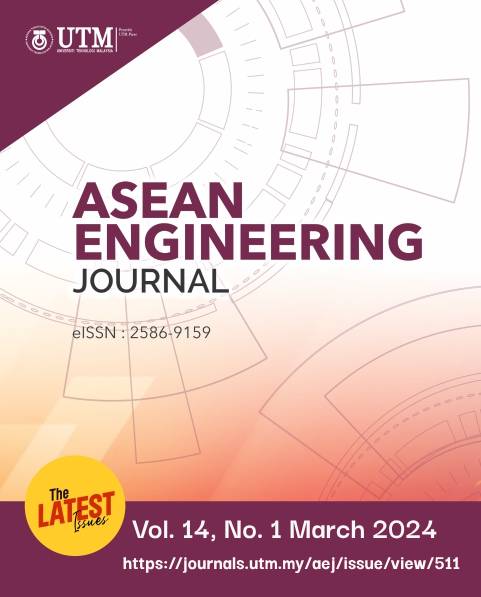ENSEMBLE CLASSIFIER BASED FAKE NEWS IDENTIFICATION IN ONLINE SOCIAL NETWORK
DOI:
https://doi.org/10.11113/aej.v14.18150Keywords:
Stacked Ensemble; NLP; Random Forest; Machine Learning; NBTree; Fake News detectionAbstract
In today’s context, one of the main mediums of news consumption is through social media. It has become a common trend now to produce fake news for speedy propagation and popularity. Thus, it creates a sort of illusion and deception for readers. Amidst the umpty number of researches done, we could say that there is no research that could accurately predict fake news over online. In this study, the ensemble classifier is employed to develop a model for fake news identification in online social networks. This proposed method applies the stacked ensemble classification model, the proposed approach that learns the represented text model and classifies the textual data into real news and fake news. Then, the proposed approach takes the collaborative decision from the classified data that is generated from the multiple base learners using the weight-based ensemble method. The accuracy prediction and performance evaluation of time consumption of detection fake news are consecutively 80 Percentage and 11 ms respectively. Thus, it improves the efficiency and classification accuracy over large-scale social media messages through an efficient sentiment analysis model.
References
MontherAldwairi, AliAlwahedi. 2018. Detecting Fake News in Social Media Networks. Procedia Computer Science, 141: 215-222.
Shu, K., Sliva, A., Wang, S., Tang, J., & Liu, H. 2017) Fake news detection on social media: A data mining perspective. ACM SIGKDD Explorations Newsletter, 19(1): 22-36.
Allcott, H., & Gentzkow, M. 2017. Social media and fake news in the 2016 election. Journal of Economic Perspectives, 31(2): 211-36.
Chen, Y., Conroy, N. J., & Rubin, V. L. 2015. Misleading online content: Recognizing clickbait as false news. In Proceedings of the 2015 ACM on Workshop on Multimodal Deception Detection 15-19. ACM.
Hušek, M. 2018. Text mining in social network analysis. Charles University.
Chen, Y., Conroy, N. J., & Rubin, V. L. 2015. News in an online world: The need for an “automatic crap detector”. Proceedings of the Association for Information Science and Technology, 52(1): 1-4.
Freeman, D. M. 2017. Can you spot the fakes?: On the limitations of user feedback in online social networks. In Proceedings of the 26th International Conference on World Wide Web. 1093-1102. International World Wide Web Conferences Steering Committee.
Tschiatschek, S., Singla, A., Gomez Rodriguez, M., Merchant, A., & Krause, A. 2018, Fake News Detection in Social Networks via Crowd Signals. In Companion of the The Web Conference 2018 on The Web Conference 2018 517-524. International World Wide Web Conferences Steering Committee.
Cao, Q., Sirivianos, M., Yang, X., & Pregueiro, T. 2012. Aiding the detection of fake accounts in large scale social online services. In Proceedings of the 9th USENIX conference on Networked Systems Design and Implementation. 15-15. USENIX Association.
Zubiaga, A., Aker, A., Bontcheva, K., Liakata, M., & Procter, R. 2018. Detection and resolution of rumours in social media: A survey. ACM Computing Surveys (CSUR), 51(2): 32.
Zhao, Z., Zhao, J., Sano, Y., Levy, O., Takayasu, H., Takayasu, M., ... & Havlin, S. 2018. Fake news propagate differently from real news even at early stages of spreading. arXiv preprint arXiv:1803.03443.
Chen, Y., Conroy, N. J., & Rubin, V. L. 2015. Misleading online content: Recognizing clickbait as false news. In Proceedings of the 2015 ACM on Workshop on Multimodal Deception Detection 15-19. ACM.
Rubin, V. L., Chen, Y., & Conroy, N. J. 2015. Deception detection for news: three types of fakes. In Proceedings of the 78th ASIS&T Annual Meeting: Information Science with Impact: Research in and for the Community.83. American Society for Information Science.
Y. Shukla, N. Yadav, and A. Hari, 2019. “An unique approach for detection of fake news using machine learning,” Proceedings of the International Journal for Research in Applied Science and Engineering Technology, 7(6): 491–496.
Anu Shrestha, 2020 Francesca Spezzano, and Abishai Joy, “Detecting Fake News Spreaders in Social Networks via Linguistic and Personality Features Notebook for PAN at CLEF”, CEUR Workshop Proceedings
Lex, E., Juffinger, A., & Granitzer, M. 2010. Objectivity classification in online media. In Proceedings of the 21st ACM conference on Hypertext and hypermedia. 293-294. ACM.
Zhang, J., Cui, L., Fu, Y., & Gouza, F. B. 2018. Fake News Detection with Deep Diffusive Network Model. arXiv preprint arXiv:1805.08751.
Mohammad, S. M., Sobhani, P., & Kiritchenko, S. 2017. Stance and sentiment in tweets. ACM Transactions on Internet Technology (TOIT), 17(3): 26.
Sriram, B., Fuhry, D., Demir, E., Ferhatosmanoglu, H., & Demirbas, M. 2010. Short text classification in twitter to improve information filtering. In Proceedings of the 33rd international ACM SIGIR conference on Research and development in information retrieval. 841-842. ACM.
Zhang, Y., Jin, R., & Zhou, Z. H. 2010. Understanding bag-of-words model: a statistical framework. International Journal of Machine Learning and Cybernetics, 1(1-4): 43-52.
Wang, G., Sun, J., Ma, J., Xu, K., & Gu, J. 2014. Sentiment classification: The contribution of ensemble learning. Decision support systems, 57: 77-93.
Fersini, E., Messina, E., & Pozzi, F. A. 2014. Sentiment analysis: Bayesian ensemble learning. Decision support systems, 68: 26-38.
Partalas, I., Tsoumakas, G., & Vlahavas, I. 2010. An ensemble uncertainty aware measure for directed hill climbing ensemble pruning. Machine Learning, 81(3): 257-282.
Xia, R., Zong, C., & Li, S. 2011. Ensemble of feature sets and classification algorithms for sentiment classification. Information Sciences, 181(6): 1138-1152.
Pang, B., & Lee, L. 2004. A sentimental education: Sentiment analysis using subjectivity summarization based on minimum cuts. In Proceedings of the 42nd annual meeting on Association for Computational Linguistics. 271. Association for Computational Linguistics.
Van Puyvelde, D., Coulthart, S., & Hossain, M. S. 2017. Beyond the buzzword: big data and national security decision-making. International Affairs, 93(6): 1397-1416.
Pat Langley, Wayne Iba, Kevin Thompson.1992. An analysis of bayesian classifiers. National Conference on Artificial Intelligence, 223–228.
Ross R. Quinlan.1993. C4.5: programs for machine learning. Morgan Kaufmann Publishers Inc.
Mahabub, A. A robust technique of fake news detection using Ensemble Voting Classifier and comparison with other classifiers. SN Appl. Sci. 2, 525 (2020). https://doi.org/10.1007/s42452-020-2326-y
Yuan D, Lu X, Li D, Liang Y, Zhang X. 2019. Particle filter re-detection for visual tracking via correlation filters. Multimedia Tools and Applications 78(11):14277–14301
X. Zhou, R. Zafarani, K. Shu, and H. Liu, 2019. “Fake news: fundamental theories, detection strategies and challenges,” in Proceedings of the 12th ACM International Conference on Web Search and Data Mining, Melbourne, Australia, January
D. de Beer and M. Matthee, “Approaches to identify fake news: a systematic literature review,” in Proceedings of the International Conference on Integrated Science, Kep, Cambodia, May 2020.
Hasan, H., & Hashim, L. 2009. What's new in online news. PACIS 2009 Proceedings, 1-13, Hyderabad, India
A. Bondielli and F. Marcelloni, 2019. “A survey on fake news and rumour detection techniques,” Information Sciences, 497: 38–55,
Gutierrez-Espinoza, F. Abri, A. S. Namin, K. S. Jones, and D. R. Sears, 2020. “Fake reviews detection through ensemble learning,” https://arxiv.org/abs/2006.07912, Cornell University
Y. J. Lu and C. T. Li, “GCAN: graph-aware co-attention networks for explainable fake news detection on social media,” https://arxiv.org/abs/2004.11648, 2020.
Auhtor? 2020, https://www.kaggle.com/mrisdal/fake-news Fake or Real News Retrieved on 11 June 2023
Adil H Khan,Dayang Nur Fatimah Awang Iskandar, Jawad F. Al-Asad,Hiren Mewada,Muhammad Abid Shera. 2022. Ensemble learning of deep learning and traditional machine learning approaches for skin lesion segmentation and classification. Concurrency and Computation Practice and Experience 34(5) https://doi.org/10.1002/cpe.6907







